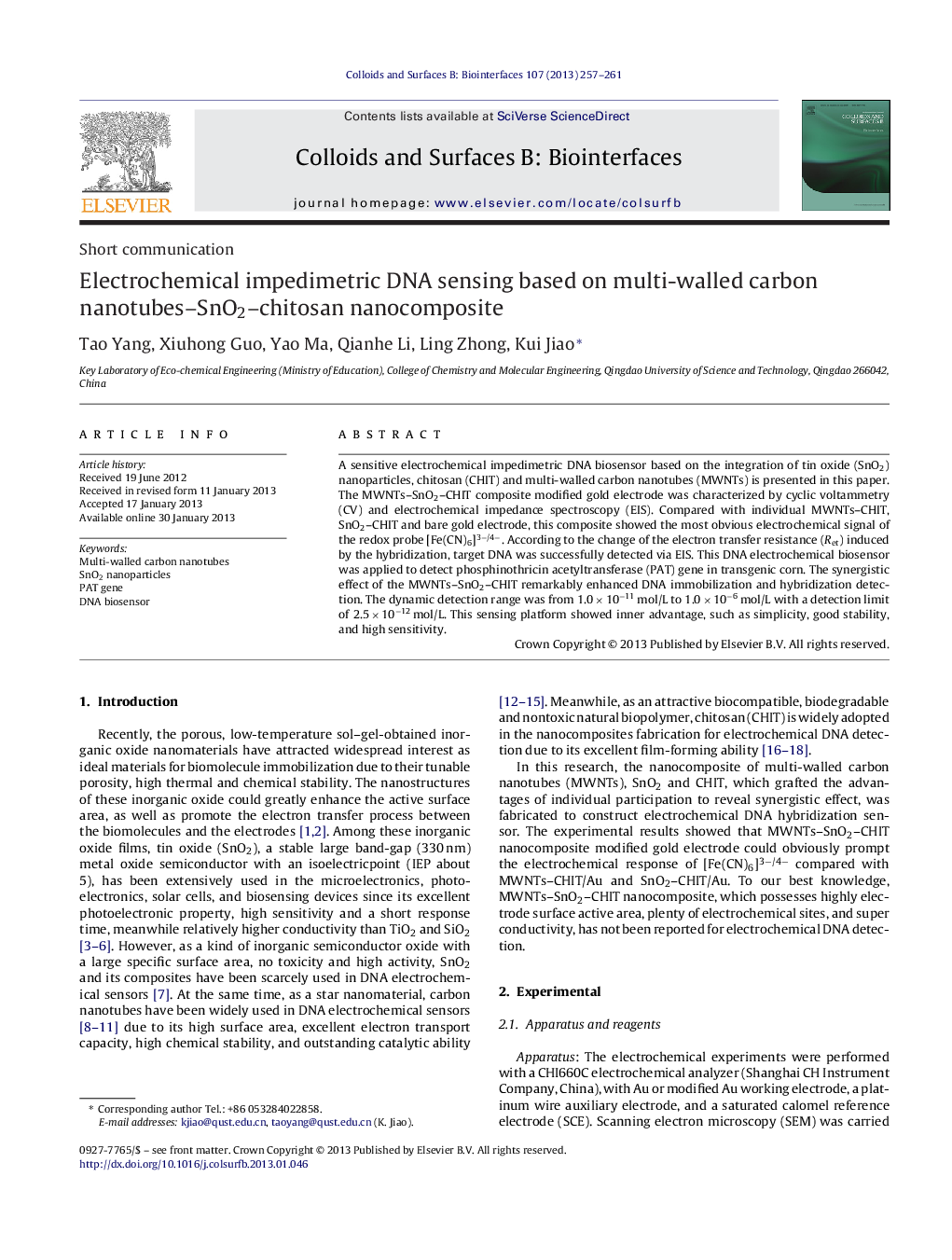| Article ID | Journal | Published Year | Pages | File Type |
|---|---|---|---|---|
| 600147 | Colloids and Surfaces B: Biointerfaces | 2013 | 5 Pages |
A sensitive electrochemical impedimetric DNA biosensor based on the integration of tin oxide (SnO2) nanoparticles, chitosan (CHIT) and multi-walled carbon nanotubes (MWNTs) is presented in this paper. The MWNTs–SnO2–CHIT composite modified gold electrode was characterized by cyclic voltammetry (CV) and electrochemical impedance spectroscopy (EIS). Compared with individual MWNTs–CHIT, SnO2–CHIT and bare gold electrode, this composite showed the most obvious electrochemical signal of the redox probe [Fe(CN)6]3−/4−. According to the change of the electron transfer resistance (Ret) induced by the hybridization, target DNA was successfully detected via EIS. This DNA electrochemical biosensor was applied to detect phosphinothricin acetyltransferase (PAT) gene in transgenic corn. The synergistic effect of the MWNTs–SnO2–CHIT remarkably enhanced DNA immobilization and hybridization detection. The dynamic detection range was from 1.0 × 10−11 mol/L to 1.0 × 10−6 mol/L with a detection limit of 2.5 × 10−12 mol/L. This sensing platform showed inner advantage, such as simplicity, good stability, and high sensitivity.
Graphical abstractFigure optionsDownload full-size imageDownload as PowerPoint slideHighlights► A novel nanocomposite firstly integrated with multi-walled carbon nanotubes, SnO2 and chitosan is reported. ► The nanocomposite revealed a large specific surface area, plenty of electrochemical sites and high activity. ► The nanocomposite grafted the advantages of individual constitutes to show synergistic effect for electrochemical signal of [Fe(CN)6]3−/4−, a classic DNA detector.
